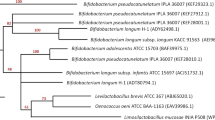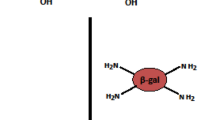Abstract
Many industrial enzymes can be highly glycosylated, including the β-glucosidase enzymes. Although glycosylation plays an important role in many biological processes, such chains can cause problems in the multipoint immobilization techniques of the enzymes, since the glycosylated chains can cover the reactive groups of the protein (e.g., Lys) and do not allow those groups to react with reactive groups of the support (e.g., aldehyde and epoxy groups). Nevertheless, the activated glycosylated chains can be used as excellent crosslinking agents. The glycosylated chains when oxidized with periodate can generate aldehyde groups capable of reacting with the amino groups of the protein itself. Such intramolecular crosslinks may have significant stabilizing effects. In this study, we investigated if the intramolecular crosslinking occurs in the oxidized β-glucosidase and its effect on the stability of the enzyme. For this, the oxidation of glycosidic chains of β-glucosidase was carried out, allowing to demonstrate the formation of aldehyde groups and subsequent interaction with the amine groups and to verify the stability of the different forms of free enzyme (glycosylated and oxidized). Furthermore, we verified the influence of the glycosidic chains on the immobilization of β-glucosidase from Aspergillus niger and on the consequent stabilization. The results suggest that intramolecular crosslinking occurred and consequently the oxidized enzyme showed a much greater stabilization than the native enzyme (glycosylated). When the multipoint immobilization was performed in amino-epoxy-agarose supports, the stabilization of the oxidized enzyme increases by a 6-fold factor. The overall stabilization strategy was capable to promote an enzyme stabilization of 120-fold regarding to the soluble unmodified enzyme.







Similar content being viewed by others
References
Farinas, C. S., Marconcini, J. M., & Mattoso, L. H. C. (2018). Enzymatic conversion of sugarcane lignocellulosic biomass as a platform for the production of ethanol, enzymes and nanocellulose. Journal of Renewable Materials, 6(2), 203–216.
Freitas, J. V., Ruotolo, L. A. M., & Farinas, C. S. (2019). Adsorption of inhibitors using a CO2-activated sugarcane bagasse fly ash for improving enzymatic hydrolysis and alcoholic fermentation in biorefineries. Fuel, 251, 1–9.
Bhattacharya, A. S., Bhattacharya, A., & Pletschke, B. I. (2015). Synergism of fungal and bacterial cellulases and hemicellulases: A novel perspective for enhanced bio-ethanol production. Biotechnology Letters, 37(6), 1117–1129.
Satyamurthy, P., Jain, P., Karande, V. S., & Nadanathangam, V. (2016). Nanocellulose induces cellulase production in Trichoderma reesei. Process Biochemistry, 51(10), 1452–1457.
Prasanna, H. N., Ramanjaneyulu, G., & Reddy, B. R. (2016). Optimization of cellulase production by Penicillium sp. 3 Biotech, 162, 1–11.
Paramjeet, S., Manasa, P., & Korrapati, N. (2018). Biofuels: Production of fungal-mediated ligninolytic enzymes and the modes of bioprocesses utilizing agro-based residues. Biocatalysis and Agricultural Biotechnology, 14, 57–71.
Das, A., Paul, T., Ghosh, P., Halder, S. K., Mohapatra, P. K., Pati, B. R., & Mondal, K. C. (2015). Kinetic study of a glucose tolerant β-Glucosidase from Aspergillus fumigatus ABK9 entrapped into alginate beads. Waste and Biomass Valorization, 6, 53–61.
Agirre, J., Ariza, A., Offen, W. A., Turkenburg, J. P., Roberts, S. M., McNicholas, S., Harris, P. V., McBrayer, B., Dohnalek, J., Cowtan, K. D., Davies, G. J., & Wilson, K. S. (2016). Three-dimensional structures of two heavily N-glycosylated Aspergillus sp. family GH3 b-D-glucosidases. Acta Cryst, D72, 254–265.
Zahoor, S., Javed, M. M., Aftab, S., Latif, F., & Haq, I. (2011). Metabolic engineering and thermodynamic characterization of an extracellular β-glucosidase produced by Aspergillus niger. African Journal of Biotechnology, 10(41), 8107–8116.
Juturu, V., & Wu, J. C. (2014). Microbial cellulases: Engineering, production and applications. Renewable and Sustainable Energy Reviews, 33, 188–203.
Goetting, P. (2016). Effects of glycosylation on the enzymatic activity and mechanisms of proteases. International Journal of Molecular Sciences, 17(12). https://doi.org/10.3390/ijms17121969.
Zhou, F., Olman, V., & Xu, Y. (2009). Large-scale analyses of glycosylation in cellulases. Genomics, Proteomics & Bioinformatics, 7(4), 194–199. https://doi.org/10.1016/S1672-0229(08)60049-2.
Beckham, G., Dai, Z., Mathews, J. F., Momany, M., Payne, C. M., Adney, W. S., Baker, S. E., & Himmel, M. E. (2012). Harnessing glycosylation to improve cellulase activity. Current Opinion in Biotechnology, 23(3), 338–345.
Hayashida, S., & Yoshioka, H. (1980). The role of carbohydrate moiety on thermostability of cellulases from Humicola insolens YH-8. Agricultural and Biological Chemistry, 44(3), 481–487.
Jeoh, T., Michener, W., Himmel, M. E., Decker, S. R., & Adney, W. S. (2008). Implications of cellobiohydrolase glycosylation for use in biomass conversion. Biotechnology for Biofuels, 1(1), 10. https://doi.org/10.1186/1754-6834-1-10.
Gusakov, A. V., Dotsenko, A. S., Rozhkova, A. M., & Sinitsyn, A. P. (2017). N-linked glycans are an important component of the processive machinery of cellobiohydrolases. Biochimie, 132, 102–108.
Somera, A. F., Pereira, M. G., Guimarães, L. H. S., Polizeli, M. L. T. M., Terenzi, H. F., Furriel, R. P. M., & Jorge, J. A. (2009). Effect of glycosylation on the biochemical properties of β-xylosidases from Aspergillus versicolor. Journal of Microbiology, 47(3), 270–276.
Vieira, M. F., Vieira, A. M. S., Zanin, G. M., Tardioli, P. W., Mateo, C., & Guisán, J. M. (2011). β-Glucosidase immobilized and stabilized on agarose matrix functionalized with distinct reactive groups. Journal of Molecular Catalysis B: Enzymatic, 69(1-2), 47–53.
Borges, D. G., Baraldo Junior, A., Farinas, C. S., Giordano, R. L. C., & Tardioli, P. W. (2014). Enhanced saccharification of sugarcane bagasse using soluble cellulase supplemented with immobilized β-glucosidase. Bioresource Technology, 167, 206–213.
Torchilin, V. P., & Martinek, K. (1979). Enzyme stabilization without carriers. Enzyme and Microbial Technology, 1(2), 74–82.
Fernandez-Lafuente, R., Rosell, C. M., Rodriguez, V., & Guisan, J. M. (1995). Strategies for enzyme stabilization by intramolecular crosslinking with bifuncional reagents. Enzyme and Microbial Technology, 17(6), 517–523.
Tatsumoto, K., Oh, K. K., Baker, J. O., & Himmel, M. E. (1989). Enhanced stability of glucoamylase through chemical crosslinking. Applied Biochemistry and Biotechnology, 20, 293–308.
Wong, S. S., & Wong, L. C. (1992). Chemical crosslinking and the stabilization of proteins and enzymes. Enzyme and Microbial Technology, 14(11), 866–874.
Torchilin, V. P., Maksimenko, A. V., Smirnov, V. N., Berezin, I. V., Klibanov, A. M., & Martinek, K. (1978). The principles of enzyme stabilization III *. The effect of the length of intra-molecular cross-linkages on thermostability of enzymes. Biochimica et Biophysica Acta, 522, 277–283.
Torchilin, V. P., Maksimenko, A. V., Smirnov, V. N., Berezin, I. V., & Martinek, K. (1979). Principles of enzyme stabilization V. The possibility of enzyme selfstabilization under the action of potentially reversible intramolecular cross-linkages of different length. Biochimica et Biophysica Acta, 568, 1–10.
Silva, T. M., Pessela, B. C., da Silva, J. C. R., Lima, M. S., Jorge, J. A., Guisan, J. M., & Polizeli, M. L. (2014). Immobilization and high stability an extracellular β-glucosidase from Aspergillus japonicas by ionic interactions. Journal of Molecular Catalysis B: Enzymatic, 104, 95–100.
Baraldo Junior, A., Borges, D. G., Tardioli, P. W., & Farinas, C. S. (2014). Characterization of 훽-glucosidase produced by Aspergillus niger under solid-state fermentation and partially purified using MANAE-Agarose. Biotechnology Research International. https://doi.org/10.1155/2014/317092.
González-Pombo, P., Pérez, G., Carrau, F., Guisán, J. M., Batista-Viera, F., & Brena, B. M. (2008). One-step purification and characterization of an intracellular β-glucosidase from Metschnikowia pulcherrima. Biotechnology Letters, 30(8), 1469–1475.
Mateo, C., Bolivar, J. M., Godoy, C. A., Rocha-Martin, J., Pessela, B. C., Curiel, J. A., Munoz, R., Guisan, J. M., & Fernández-Lorente, G. (2010). Improvement of enzyme properties with a two-step immobilizaton process on novel heterofunctional supports. Biomacromolecules, 11(11), 3112–3117.
Tardioli, P. W., Vieira, M. F., Vieira, A. M. S., Zanin, G. M., Betancor, L., Mateo, C., Fernández-Lorente, G., & Guisán, J. M. (2011). Immobilization–stabilization of glucoamylase: Chemical modification of the enzyme surface followed by covalent attachment on highly activated glyoxyl-agarose supports. Process Biochemistry, 46(1), 409–412.
Lima, M. A., Oliveira-Neto, M., Kadowaki, M. A. S., Rosseto, F. R., Prates, E. T., Squina, F. M., Leme, A. F. P., Skaf, M. S., & Polikarpov, I. (2013). Protein structure and folding: Aspergillus niger β-glucosidase has a cellulase-like tadpole molecular shape: Insights into glycoside hydrolase family 3 (GH3) β-glucosidase structure and function. The Journal of Biological Chemistry, 288(46), 32991–33005.
Farinas, C. S., Loyo, M. M., Baraldo Junior, A., Tardioli, P. W., Bertucci Neto, V., & Couri, S. (2010). Finding stable celulase and xylanase: Evaluation of the synergistic effect of pH and temperature. New Biotechnology, 27(6), 810–815.
Fernandez-Lorente, G., Godoy, C. A., Mendes, A. A., Lopez-Gallego, F., Grazu, V., Rivas, B., Palomo, J. M., Hermoso, J., Fernandez-Lafuente, R., & Guisan, J. M. (2008). Solid-phase chemical amination of a lipase from Bacillus thermocatenulatus to improve its stabilization via covalent immobilization on highly activated glyoxyl-agarose. Biomacromolecules, 9(9), 2553–2561.
Mateo, C., Fernandez-Lorente, G., Abian, O., Fernandez-Lafuente, R., & Guisán, J. M. (2000). Multifunctional epoxy supports: A new tool to improve the covalent immobilization of proteins. The Promotion of Physical Adsorptions of Proteins on the Supports before Their Covalent Linkage. Biomacromolecules, 1(4), 739–745.
Bolivar, J. M., Mateo, C., Grazu, V., Carrascosa, A. V., Pessela, B. C., & Guisán, J. M. (2010). Heterofunctional supports for the one-step purification, immobilization and stabilization of large multimeric enzymes: Amino-glyoxyl versus amino-epoxy supports. Process Biochemistry, 45(10), 1692–1698.
Acknowledgments
The authors thank the support from Research Institute of Food Science (CIAL), Embrapa Instrumentation of São Carlos, Foundation for Research Support of Espírito Santo (FAPES), and Federal University of Espírito Santo (UFES).
Author information
Authors and Affiliations
Corresponding authors
Additional information
Publisher’s Note
Springer Nature remains neutral with regard to jurisdictional claims in published maps and institutional affiliations.
Rights and permissions
About this article
Cite this article
Pinotti, L.M., Tardioli, P.W., Farinas, C.S. et al. Stabilization of Glycosylated β-Glucosidase by Intramolecular Crosslinking Between Oxidized Glycosidic Chains and Lysine Residues. Appl Biochem Biotechnol 192, 325–337 (2020). https://doi.org/10.1007/s12010-020-03321-x
Received:
Accepted:
Published:
Issue Date:
DOI: https://doi.org/10.1007/s12010-020-03321-x




